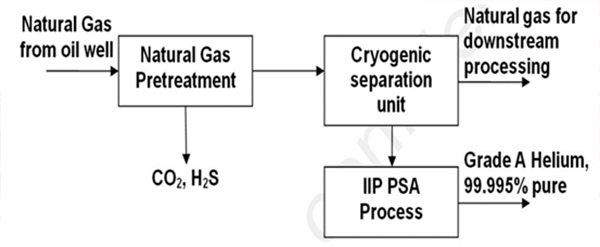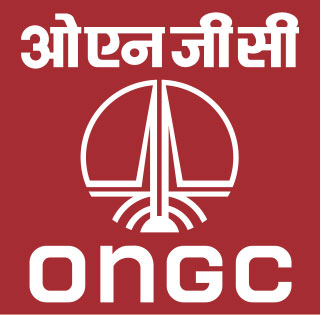Uranium Project of ONGC Energy Centre (OEC) is involved in exploration of subsurface mineralization of Uranium in sedimentary basins of India amenable for exploitation through In-Situ Leaching (ISL) on commercial scale. The Project was started in 2008 and the exploratory drilling commenced in the year 2011 with the following objectives:
- Identify Uranium deposits in Sedimentary Basin of India amenable to In Situ Leaching
- Exploration of Helium and Rare Earth Elements
Collaborators: Department of Atomic Energy (DAE),
Atomic Mineral Directorate (AMD), Hyderabad,
Uranium Corporation of India Limited (UCIL)
The exploration work is carried out based on study and analysis of Geophysical data including Logs recorded (Gamma Ray/Spectral Gamma Ray) by ONGC at shallower depths for Hydrocarbon exploration and development. The analysis is confined to shallower depth. This is first of its kind experiment where Uranium exploration is being attempted using the subsurface Well Log data (of ONGC wells) analysis.
Based upon the study of recorded logs by ONGC and other Geo-scientific data, Uranium Project has drilled, cored and logged around 172 wells and covered following Sedimentary basins of the country.
- KG Basin
- Cambay Basin
- Vindhyan Basin
- Ramnad Sub Basin
- Barmer - Sanchor Basin
Out of the above basins, areas from KG and Cambay Basins have been identified suitable for carrying out In- Situ Leaching operations.
In view of the advantages of the ISL method for Uranium recovery from sub-surface, OEC has taken up R&D work for exploration of sub-surface Uranium which could be amenable for extraction through ISL. The initial analysis of the well log data of oil wells drilled by ONGC is done by OEC to identify possible areas suitable for detailed analysis, modelling and experimental validation. This is followed by building geological models using geo-scientific methods for validation of model/prospects by drilling, coring, Geophysical logging, geo-chemical and petro-physical analysis of cores in order to assess the potential resources and its suitability for ISL process at any specific region. OEC is setting up laboratory facilities at IRS, Ahmedabad for sample preparation, chemical lab for initial testing, characterization and modelling for both exploration work and ISL experimental operation development. The prepared powdered core sample are sent for lab studies/ analysis to in-house ONGC laboratories like KDMIPE (Dehradun), IPSHEM (Goa), IRS, Ahmedabad, and other agencies like AMD, Hyderabad, UCIL, Jaduguda, CSIR-NGRI, Hyderabad, IIT, Kharagpur and PSGIAS, Coimbatore. Core Gamma Ray (CGR) logging has been conducted by Regional Geoscience Laboratory (RGL) at Vadodara.
Drilling for Sub-Surface Uranium Exploration
Drilling, coring and Geophysical logging are being conducted at project sites for detecting and analysing Uranium presence. This involves postulating the sub-surface Uranium mineralization model followed by taking multiple Geo-scientific inputs including ore body modelling based on seismic data, remote sensing data on paleo channels, geo-chemical maps, radiometric data, etc. for deciding locations and drilling of boreholes for core retrieval and Geophysical logging. The data generated from actual drilling is used to review and tune the sub-surface Uranium mineralization model to optimize drilling efforts. Geo-Scientific, Geological, Geophysical logging, Radiometric, Geochemical, Petro physical and other lab studies carried out so far have helped in identification of some potential areas in different sedimentary basins with significant presence of Uranium.

Helium Gas Exploration
The source of Helium (He4) is radiogenic i.e., Helium is generated due to radioactive decay of Uranium and Thorium. Hence, there is interlinking between Uranium and Helium and keeping this in mind, the Uranium Project was also tasked with exploration of Helium.
Based upon the Geological setup, seepages reported by Frontier Basin and ONGC drilled wells in the range of 0.2-0.33% of Helium concentration in the Hatta area, OEC drilled 10 no. of wells along the NW-SE fault system area in last campaign (2018-2019) exclusively for Helium Exploration. This was first of its kind drilling campaign undertaken by OEC to explore Helium resources in the country. The Helium concentrations identified by Uranium Project in SON Valley Sector are around 2000-7000 ppm (0.2-0.7%) at depths of around 500-700 metres in comparison to Average Helium concentration observed in Kuthalam Field of around 600 ppm (0.006%) at 3000-4000m depth. The Helium concentration observed in SON Valley sector is the highest Helium concentration observed in any ONGC Field at shallower depths.
Helium being an element of strategic importance, OEC has taken steps to develop pilot scale facility for Helium gas production to ensure that India has specific security on Helium in near future. The project had two phases. The phase I of the project was intended to develop the design of hybrid cryogenic and Pressure Swing Adsorption (PSA) system that enables to get the necessary high-grade Helium purity from the very low concentration of natural gas. This design has been developed using simulation modelling. The phase II of the project is in process which is about building a real prototype for pilot & demonstration scale in field.

Identification of Rare Earth Elements
Rare Earth Elements (REE) are necessary and useful elements which are having wide range of applications in high-tech consumer products of electronic and electric devices. REEs are also having significant uses in electronic displays, guidance, lasers, radar and sonar systems used for defense applications.
Some of the Rare Earth Elements like Yttrium (Y), Cerium (Ce) and Scandium (Sc) have been detected with concentrations that may be exploited to commercial levels in lab studies carried out at KDMIPE, Dehradun, PSGIAS, Coimbatore and AMD, Hyderabad.

